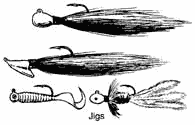
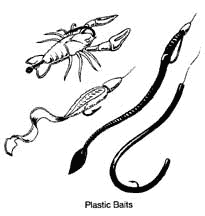
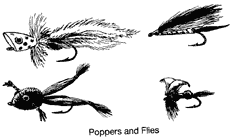
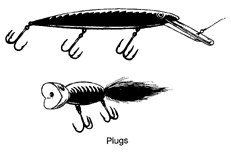




Fishing lure companies make lures in many sizes, styles, colors, and patterns. Jigs have weighted metal heads and a "tail" made of animal hair, soft plastic, feathers, or rubber. Anglers sometimes add a minnow or piece of pork rind to the jig's hook. Jigs can be used to catch nearly every kind of freshwater and many saltwater fish. Spoons are metal lures designed to look like a swimming baitfish. Many spoons are made to be cast. Others are meant to be trolled behind a moving boat. Soft-plastic worms, minnows, and crayfish are available in many sizes and colors. You can use them with or without a weight. Sometimes, plastic baits are used with a jig head, spinner or spinnerbait. Some plastic baits have scents attractive to fish built into them. Plugs have a body made of plastic or wood and are designed to be used on top of the water or at depths below the surface. Topwater or floating plugs are designed to float on the surface. Diving plugs have plastic or metal lips so they will dive to a certain depth. These diving plugs are often called "crankbaits" because they are often used with baitcasting reels that operate like a crank. Spinners have one or more blades that spin, or revolve, around a straight wire shaft. Some spinners have tails made of soft plastic or animal hair. Spinnerbaits are lures with one or more blades that spin around a "safety pin"-type shaft. Most spinnerbaits have skirts made from animal hair, vinyl, rubber, or other materials. Poppers and flies are small lures used with spincast and flyfishing tackle. These baits are very good for panfish and other fish that feed on the surface such as trout and bass. Fly tying can be a very rewarding hobby. Any one of these methods will work.
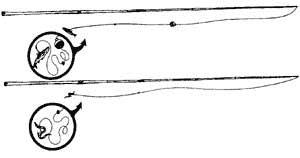
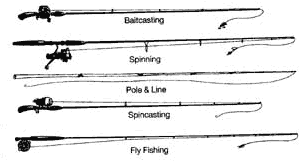
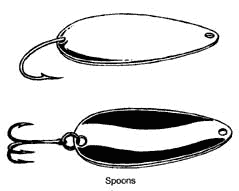
--
Types of rods
Fishing school and requirements needed to attend